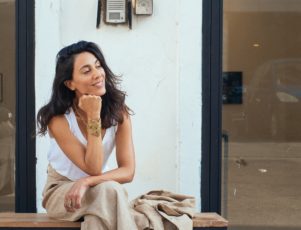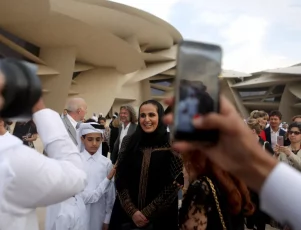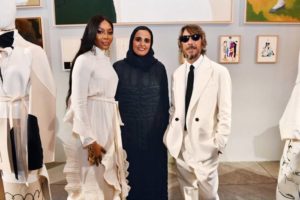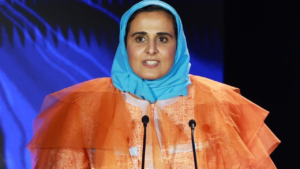In Beirut’s bustling Port District—between customs offices, storage depots and the Mediterranean—stands a gallery that has redefined what it means to exist at the edge of a global art conversation. Marfa’ Projects, founded in 2015 by gallerist Joumana Asseily, is not just an art space: it is a cultural statement about presence, collaboration, and creative resistance. The gallery takes its name from the Arabic word marfa’, meaning “port,” and the choice is anything but symbolic. Located just steps from the port, Marfa’ occupies two converted garages that open onto a world in transit.
From the beginning, Marfa’ Projects positioned itself as a platform for regional artists, many of whom had not yet found gallery representation. Rather than following dominant market trends, Asseily built the gallery through intuition and human connection—meet the artist, understand the work, and identify its relevance to the world. This approach has allowed the gallery to nurture emerging voices while maintaining an international presence through exhibitions, collaborations, residencies and participation in major art fairs.
A Gallery Shaped by a City in Constant Flux
To speak about Marfa’ Projects is to speak about Beirut itself—a city of paradoxes, where collapse and reinvention coexist every day. The gallery’s location is both raw and poetic: surrounded by trucks, shipping containers and grey concrete, Marfa’ sits at the intersection of daily commerce and creative imagination. The space is not designed to escape Beirut’s realities, but to face them directly.
That commitment was tested in August 2020, when the massive port explosion shattered much of the neighborhood. Windows blew out, structures cracked, and the gallery was heavily damaged. Yet less than a year later, Marfa’ reopened and welcomed back its artists and public, not with a memorial but with a collective exhibition—a gesture of resilience and insistence on continuing dialogue. Reopening was not simply a physical act, but a declaration that art remains essential even when everything else crumbles.
Today, Marfa’ continues to host exhibitions from a range of artists working in painting, film, photography, performance, sculpture, installation and digital media. Asseily refuses to categorize art by strict labels, and the gallery’s program reflects that freedom. What matters is experimentation, relevance, and a sense of connection—local, regional, and globally.
More Than a Gallery: A Cultural Counterweight
In a country facing economic crisis, political uncertainty and repeated trauma, Marfa’ Projects serves as a counterbalance. It proves that artistic ecosystems can thrive outside traditional art capitals and even in the most unstable conditions. The gallery acts as a bridge between Beirut and the international art world while rooting itself in the community that surrounds it. It is both a refuge and a laboratory, a space to reinvent not only artistic practice but the meaning of perseverance.
Whether you enter as a collector, a curious traveler, or someone simply seeking meaning in a turbulent world, Marfa’ Projects offers a rare experience: a place where art is not decoration or spectacle, but survival, memory, and exchange. In the shadow of cranes and shipping containers, the gallery continues to open its doors—to ideas, to dialogue, and to a different way of imagining the future.
Photos : artbasel.com –




 Sheikha Al-Mayassa has said that their goal is to develop a cultural ecosystem in Qatar that encompasses museums, exhibition galleries, an ambitious public art program, schools, film, photography and performing arts festivals, events, spaces for emerging creatives and fashion professionals and of design. She said, “We know that culture and the creative industries are key drivers of economic growth, both in Qatar and globally. And another of our priorities, closely related to the development of a cultural ecosystem, is to help introduce Qatar to other nations and cultures and to welcome people from those countries. We encourage creativity and intercultural understanding.”
Sheikha Al-Mayassa has said that their goal is to develop a cultural ecosystem in Qatar that encompasses museums, exhibition galleries, an ambitious public art program, schools, film, photography and performing arts festivals, events, spaces for emerging creatives and fashion professionals and of design. She said, “We know that culture and the creative industries are key drivers of economic growth, both in Qatar and globally. And another of our priorities, closely related to the development of a cultural ecosystem, is to help introduce Qatar to other nations and cultures and to welcome people from those countries. We encourage creativity and intercultural understanding.”